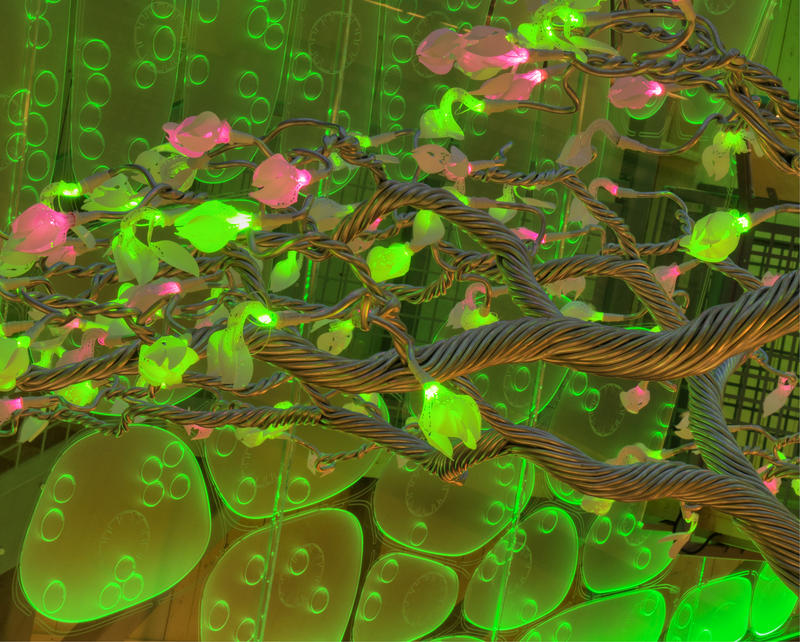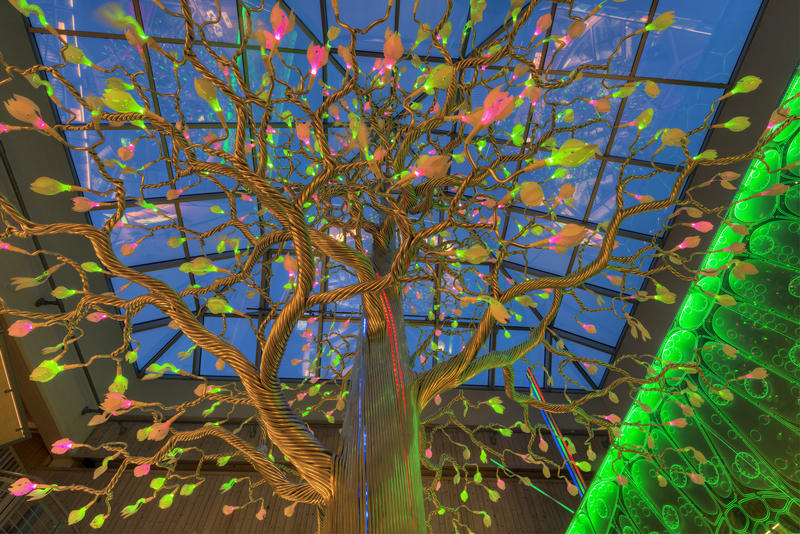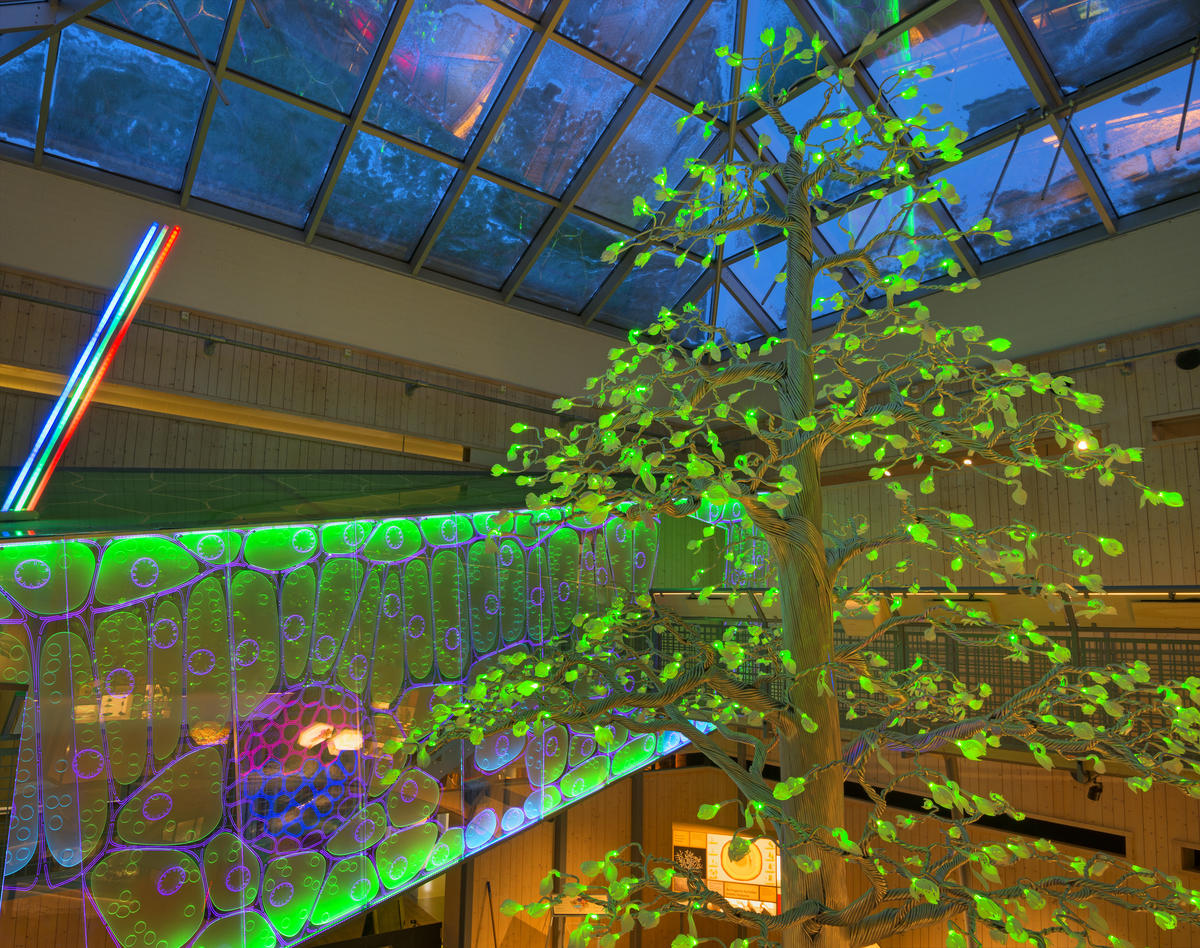The Fantastic Tree
The exhibition The Fantastic Tree presents the growth of a tree and shows you how the photosynthesis is the foundation to all life.
The leaves are the world’s best sun catchers, and we tell you how the photosynthesis happens in the leaves. The trees’ magical ability to transform air into sugar is being explained in a new and exciting way.
To demonstrate how spectacular the photosynthesis really is, we have made a 9 meter long glowing acrylic wall, displaying an incision of a leaf. In the middle of the exhibition stands a 7,5 meter tall sculpture of a tree, made of 10 kilometers of aluminum pipes – this is The Fantastic Tree.

The Fantastic Tree is the Norwegian Forest Museum’s new exhibition displaying the photosynthesis and the life, death and history of the tree. By using complicated light effects, we are able to recreatethe photosynthesis. Understanding the photosynthesis is the beginning of understanding both the carbon sequestration, the carbon cycle, and later the forests’ role in a climate context.
We tell the story of how a tree grows and show you how the photosynthesis is the foundation of all life. The leaves are the world’s best sun catchers, and we tell you how the photosynthesis happens in the leaves. The photosynthesis can be difficult to understand, but we explain the trees’ magical ability to transform air into sugar in a new and exciting way. To demonstrate how spectacular the photosynthesis really is, we have made a 9 meter long glowing acrylic wall, displaying an incision of a leaf. This wall displays how the photosynthesis happens.


10 kilometers of aluminum pipes
10.000 meters of aluminum pipes were used when building the 7,5 meter tall sculpture in the middle of the exhibition. The pipes were coiled together by the artist Kevin Iris from Wisconsin, with the help from metal company Frode Stenberg AS. Every single pipe is laced with fiber optic cable, and at the ends of the braches, there are 740 flowers and leaves.
The tree has a great educational potential and, among other things, it displays the color variations of the seasons, as well as the flow of water and nutrients through the tree. Professor Nick Stevens was in charge of developing the idea, and also the production of the leaves and the flowers by using memory metal, to create an effect that allows the flowers to open in the summer.
On the ground, encircling the tree, a root system demonstrates the life around the tree. How many insects live underneath a leaf? Different stages of decomposition, from solid wood to soil, are also presented.